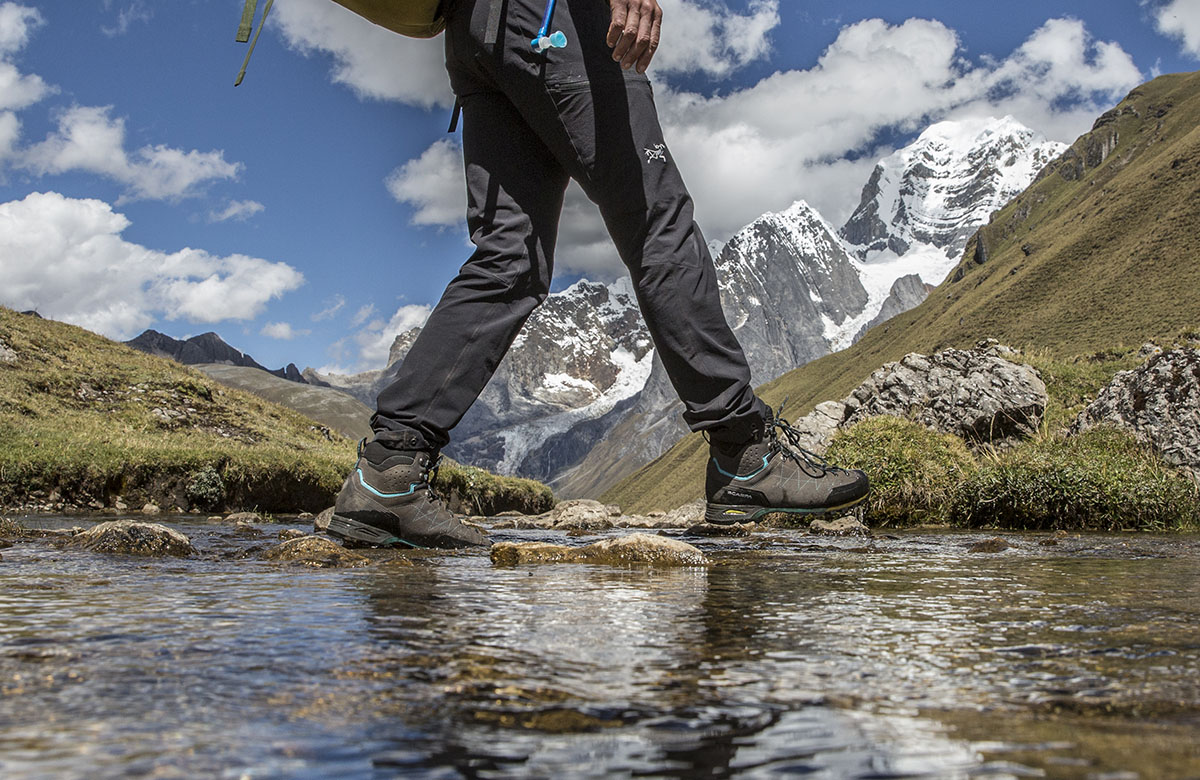
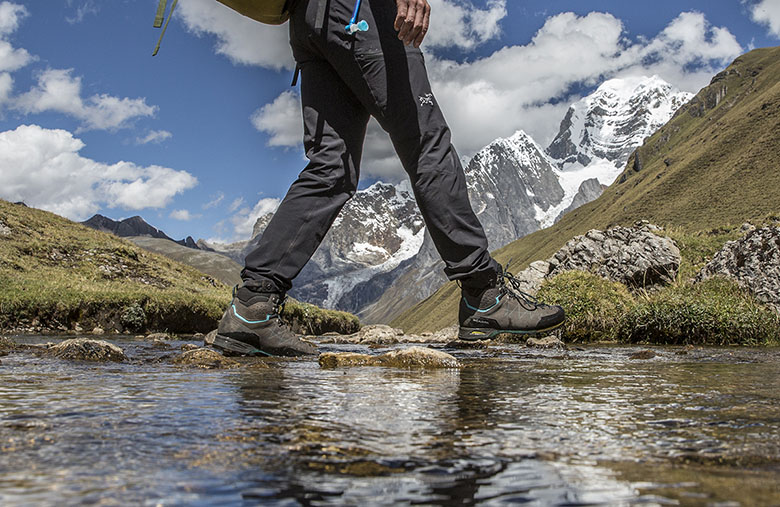
Price: $349
Weight: 2 lbs. 0 oz. (women’s)
Waterproof: Yes (Gore-Tex)
What we like: Relatively light but with ample protection for high-mileage days and heavy loads.
What we don’t: Overkill on moderate terrain and suede upper shows wear easily.
See the Women's Scarpa Zodiac Plus GTX See the Men's Scarpa Zodiac Plus GTX
Scarpa’s Zodiac Plus GTX is a fully supportive yet exceptionally lightweight boot ideal for handling high-mileage days with a heavy load. This midweight hiker is designed to shine in environments when a mountaineering boot is overkill but a low-top approach shoe is not enough. To put it to the test, we took the Zodiac Plus GTX to Peru’s Cordillera Huayhuash, donned heavy packs containing ten days' worth of supplies, and subjected the boot to everything the trail—or lack thereof—had to offer. Below is our take on its overall performance. To see how the Zodiac Plus GTX stacks up to the competition, see our articles on the best hiking boots and best women's hiking boots.
For a boot intended for high-mileage and multi-day backpacking trips, comfort is a top priority and the Scarpa Zodiac Plus GTX absolutely shines in this category. The boot was immediately comfortable out of the box and I suffered no hotspots or blisters, initially or after long periods of heavy use. While in the Cordillera Huayhuash, the Zodiac Plus was so comfortable that I was never in a hurry to remove it at the end of the day, despite the fact that I was also carrying trail runners. Even during the crowded and hot five-hour bus ride back to Huaraz following our trip, I didn’t think to change out of my boots. This in and of itself speaks volumes.
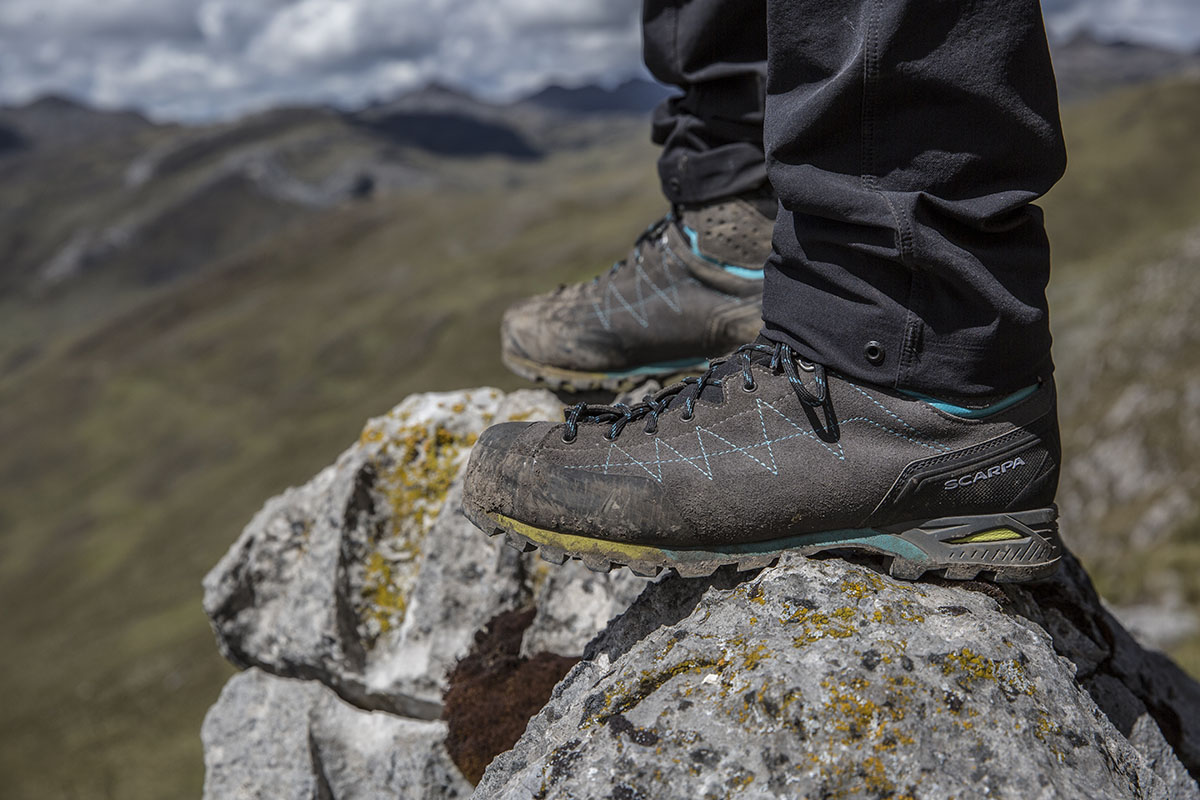
At 2 pounds even for the women’s pair, the Zodiac Plus GTX is lighter than most of its midweight competition yet still offers impressive support for high-mileage days, heavy loads, and technical terrain (all while staying impermeable to water). For comparison, a similar option in build is the Salewa Mountain Trainer 2 Mid GTX, which weighs 2 pounds 2 ounces for the women’s version. Even the “lightweight” La Sportiva Trango Tech GTX comes in slightly heavier at 2 pounds 2.8 ounces for the pair, and the more mountaineering-focused Scarpa Zodiac Tech GTX clocks in at 2 pounds 5.4 ounces. All in all, you’ll be hard-pressed to find a better combination of weight and performance for technical trails.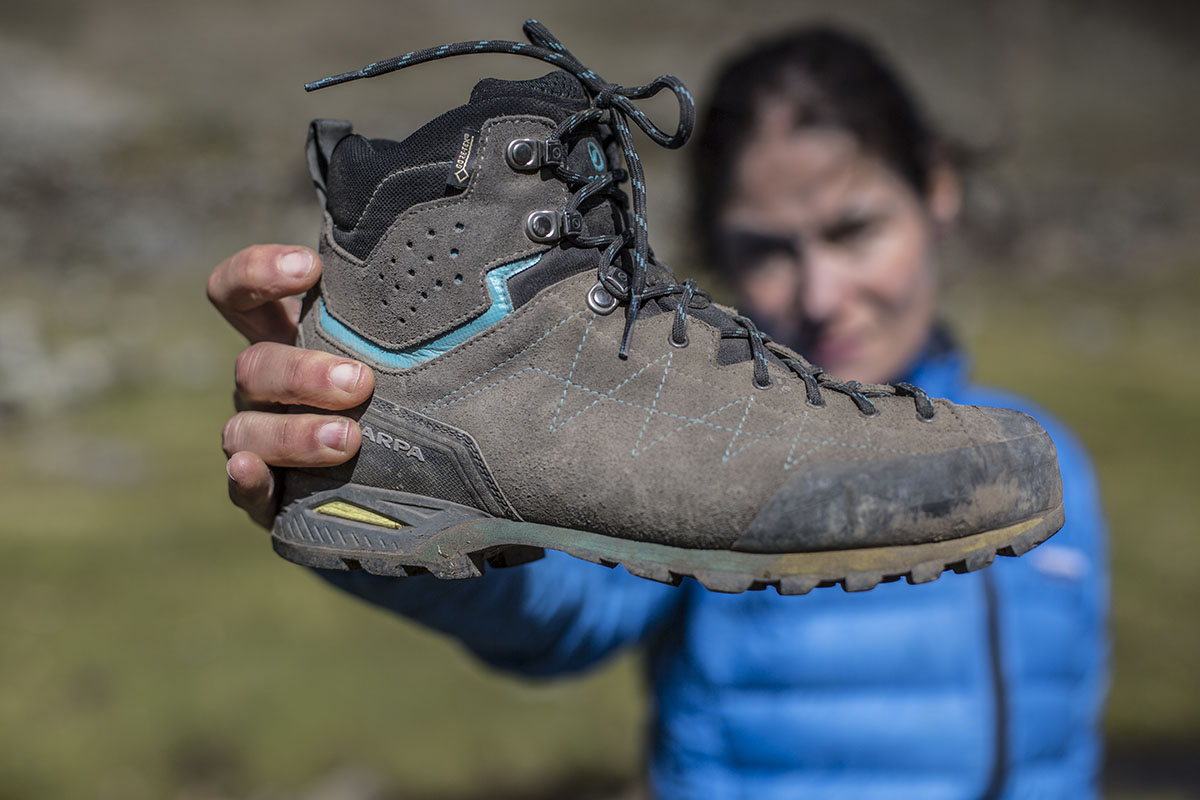
Alpine-centric Scarpa is no stranger to footwear designed to hold its ground. The Vibram Drumlin soles on the Zodiac Plus GTX provide excellent traction, even on the edges, allowing agility on sketchy scrambling routes and boulders. I subjected this boot to almost every possible walking surface—from slimy rocks and roots in the Pacific Northwest to the granite, snow, loose dust, sand, and scree of the Peruvian Andes. I’m not exaggerating when I say that I have never relied on a boot’s traction as much as I did when descending straight down 3,000 feet of loose slope on fatigued legs, and I didn’t slip once. Further, the widely spaced lugs helped keep mud—or the ubiquitous donkey manure in the Andes—from getting stuck in the tread, so the boot maintained its grip even in gloppy, clay-like terrain.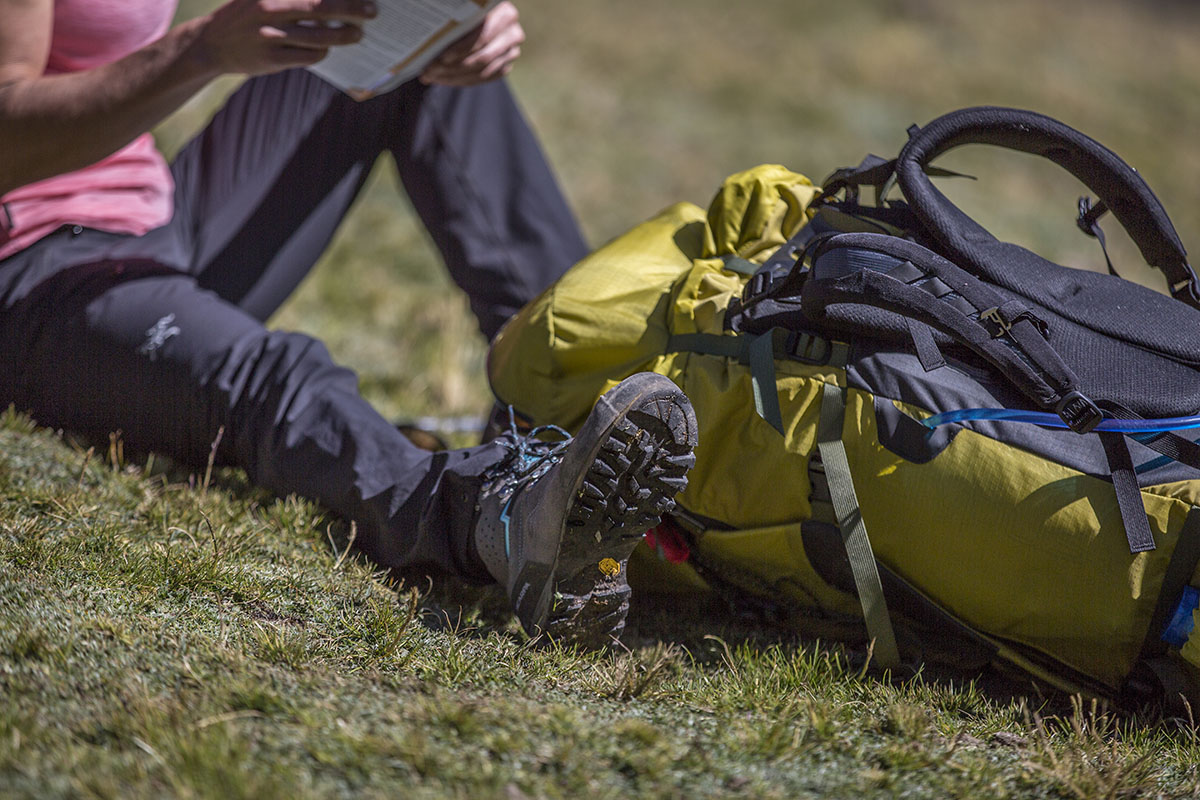
The Scarpa Zodiac Plus GTX offers a really nice combination of support and comfort. In tough terrain, it provides the stiffness needed to side-hill or descend loose slopes while wearing a heavy pack, yet is soft enough to allow your foot to flex when climbing up steep trail. This boot extends above the ankle for added support, and the Sock-Fit allows it to be laced tightly without creating bulk or constriction. In fact, the Zodiac Plus was so comfortable that I barely felt it around my ankle, but the support became obvious when a misstep occurred. I’m convinced that if I’d worn a lighter hiker instead, I would have sprained each ankle numerous times and possibly even tumbled down one of the many steep slopes along the trail.
Underfoot, Scarpa has departed from the design of the more mountaineering-focused Zodiac Tech GTX and made the Plus without a shank. Instead, they combined EVA and PU for a unique midsole blend. It’s not often that these two materials are used together, but in this case, the result is a nice balance among the stiffness, shock-absorption, and durability of PU, and the light and cushioned feeling of EVA (of which Scarpa incorporates three layers for added support). This construction—along with other features like a rubber rand at the toe box and high-top design—allowed me both the support I need when carrying a very heavy load and the comfort to do so mile after mile.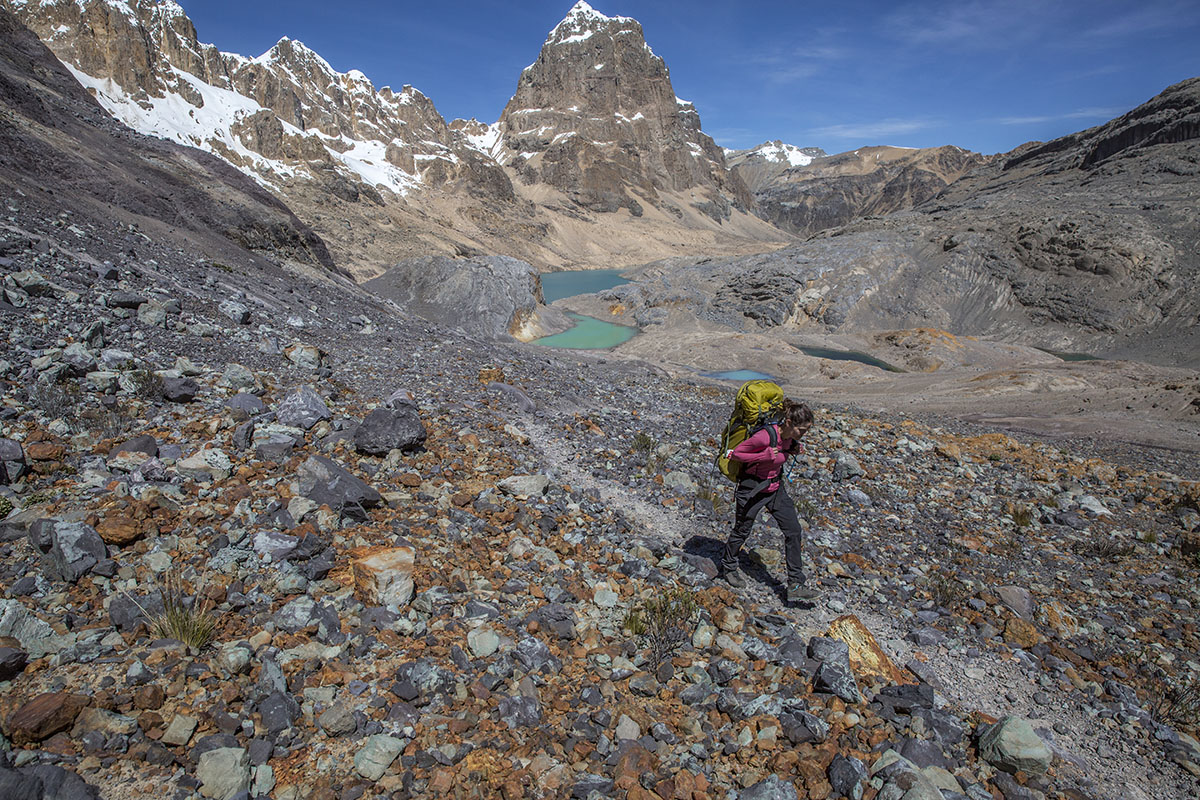
Our trek in Peru took us across streams and through many bogs, providing ample testing opportunities for boot’s water-resistant suede upper and Gore-Tex liner. In the end, both passed with flying colors. The Perwanger suede was exceptionally water-repellent, and I was impressed the first time I watched moisture quickly bead up and roll off the surface. As for the Gore-Tex liner, it lived up to its reputation, providing an excellent barrier against water (of course, so long as you don’t submerge your boot past the ankle). This waterproofing also makes the Zodiac Plus GTX a viable option for snowshoeing or other light winter travel.
Although both materials offer some breathability, the combination of leather and Gore-Tex is known to make feet swim in sweat. The use of suede for the upper, however—rather than thicker leather—allows the Zodiac Plus GTX far more breathability. Many of our days on the trail involved long ascents with no shade, but never once did my feet feel noticeably sweaty, and my socks were never more than mildly damp at the end of the day. Most importantly, I suffered none of the hotspots or blisters that I tend to associate with clammy feet.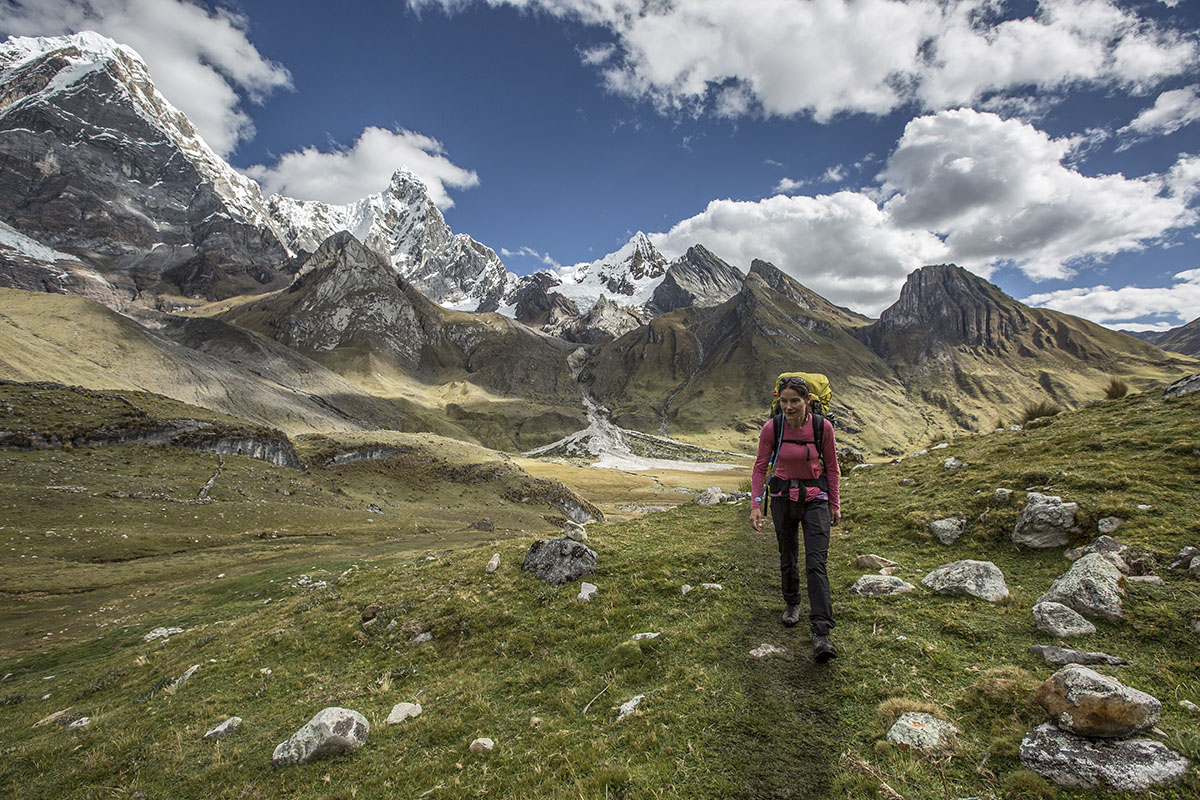
With its tough suede leather upper, high-top design, and host of features, the Scarpa Zodiac Plus GTX truly is a robust boot. A rubber rand around the toe box provides extra protection for the forefoot, and the heel box is encased to protect the uppers from abrasion. Additionally, the Sock-Fit technology helps to keep rocks, snow, and dirt from entering around the ankle. Finally, the EVA and PU midsole described above provides ample protection from uneven ground underfoot, including sharp and pointy rocks. If you’re looking for more protection than most traditional hiking boots provide, the Zodiac is a great option.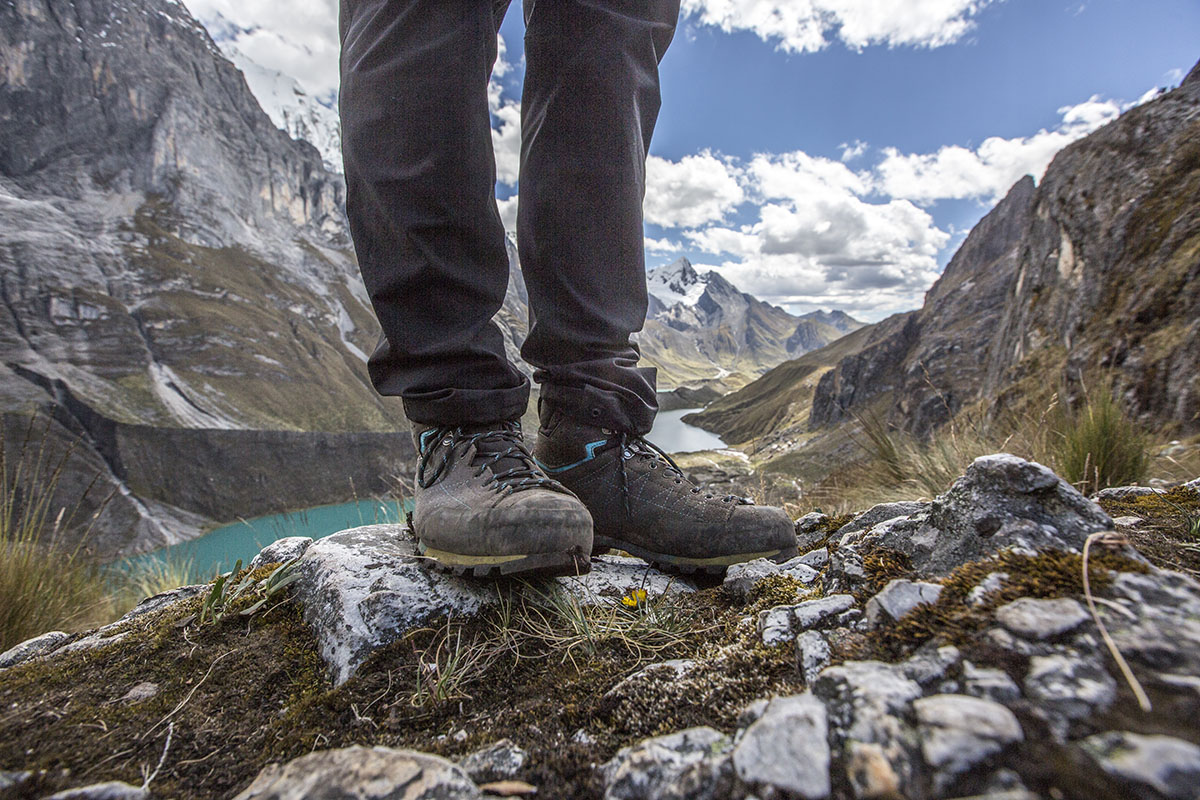
Scarpa takes pride in their craftsmanship and the fact that most of their footwear (including the Zodiac Plus GTX) is still made in Italy. One look at this boot and you’ll notice the premium build quality right away. And it’s clear that Scarpa puts a great deal of thought into the many features on the Zodiac Plus, such as their one-piece tongue and collar technology, patch of memory foam along the back of the heel, and ergonomic flexibility that surrounds the ankle and top of the foot. These features help eliminate pressure points and form fit the boot to the ankle and heel—the areas on my feet most prone to blisters.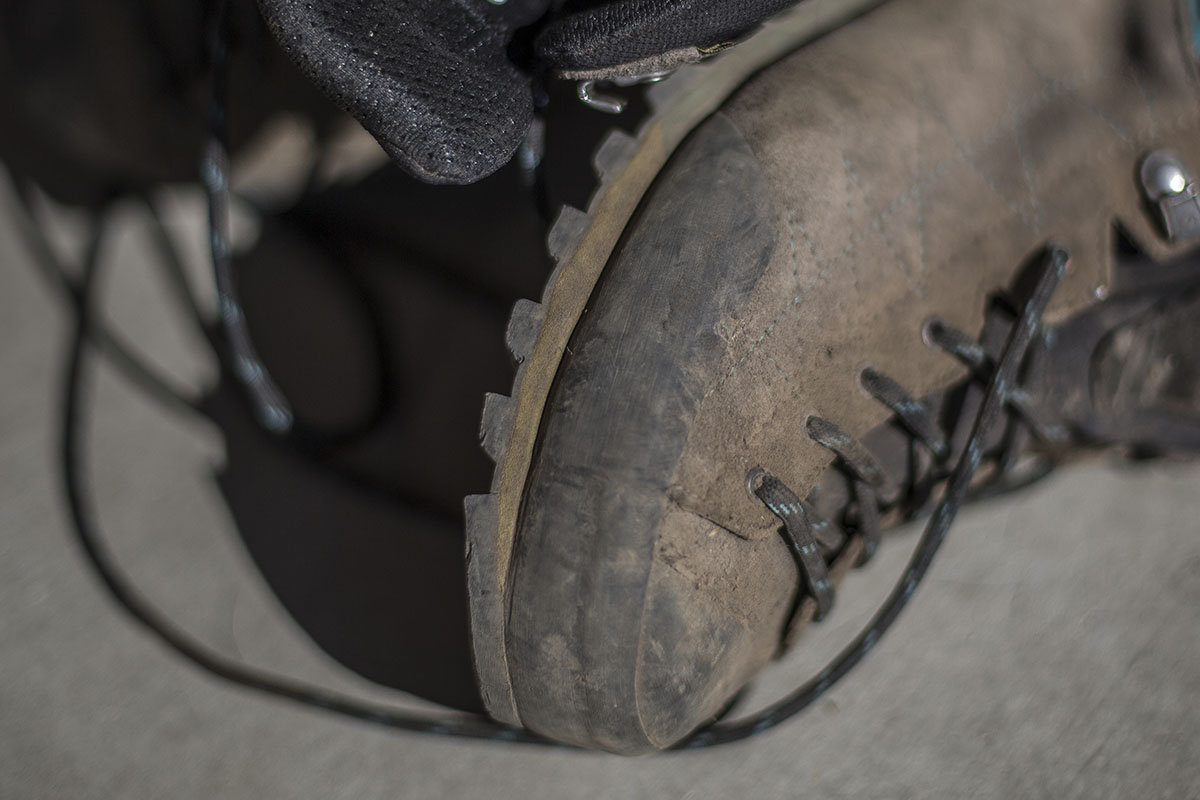
After extensive testing, I’m confident in saying that the Zodiac Plus GTX will keep going mile after mile. As mentioned above, the uppers are constructed with durable Perwanger suede and reinforced with a rubber rand and rigid rubber heel box. In addition, given that the midsole is made with three layers of EVA and the longer-lasting PU, this boot is built to stand the test of time and maintain its support, protection, and comfort even after hundreds of miles on the trail.
That said, after wearing the Zodiac Plus GTXs for ten solid days, I have to be honest: they look used. The suede upper has absorbed dust and grime, and the boots appear as though they have been through a demanding adventure or two. But the wear and tear is purely cosmetic: all stitching is intact, the rubber rand is holding solid, the metal eyelets and hooks used for the lacing system are secure, and the outsoles show only minor wear to the lugs. Nevertheless, this is one factor to consider and a potential downside of the suede.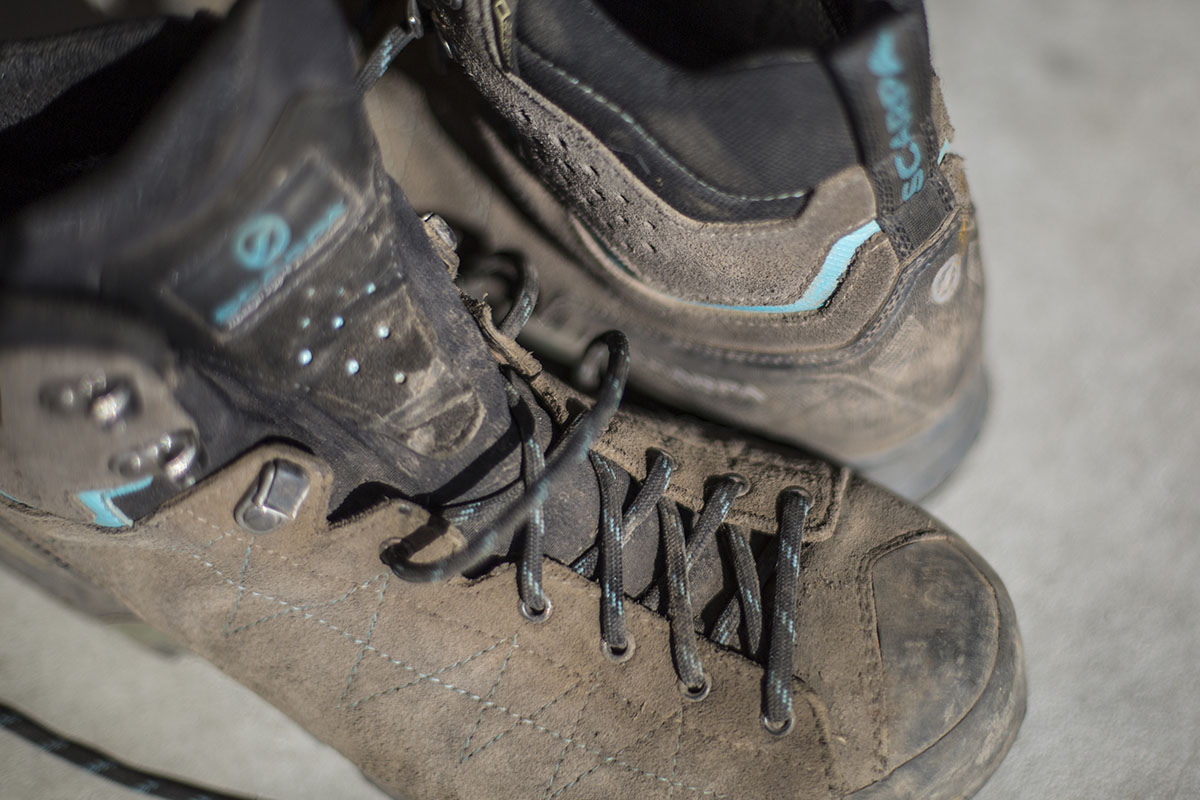
The Scarpa Zodiac Plus GTX fits true to size. I consistently wear a women’s 8.5 and found that the 8.5 (European size 40) fit perfectly. There was no slippage in the heel, and despite some of the steepest descents I have ever encountered, I did not lose a toenail. The boot also is available in European half sizes, which create smaller increments than U.S. half sizes. Shape-wise, it’s worth noting that the toe box of this boot is on the wider side of the spectrum, but it doesn’t feel boxy or sloppy for narrower-footed folks. Further, Scarpa has employed an asymmetrical lacing system (more often associated with running shoes) to reduce pressure on the top of the foot and provide a more comfortable and precise fit. And finally, the locking hooks allow the lacing to be customized—I prefer to keep the laces loose on my lower foot and tighter around my ankle.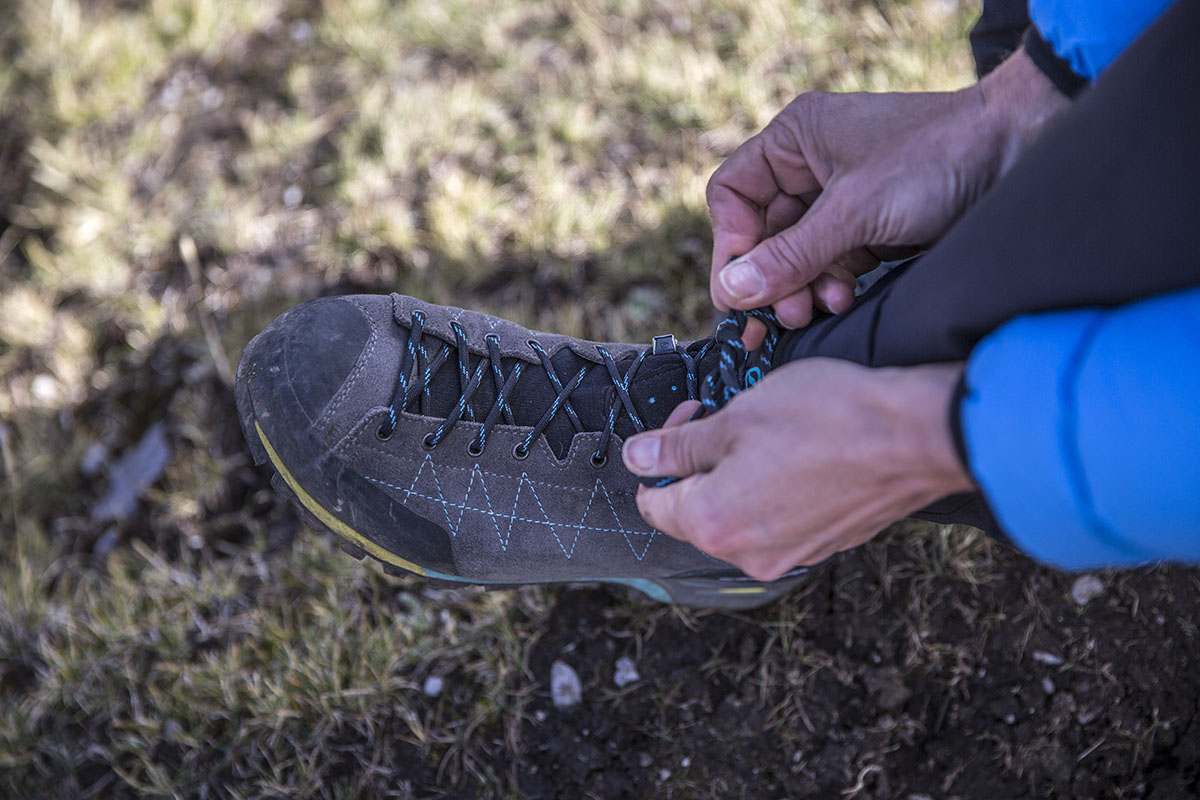
We brought the women’s version of the Zodiac Plus GTX to Peru’s Cordillera Huayhuash, and Scarpa also makes the boot in a men’s model for the same price ($349). The men’s Zodiac Plus GTX weighs around 6 ounces more at 2 pounds 6.4 ounces per pair and the colorway varies slightly (it features bright orange and yellow accents), but otherwise the boots share a nearly identical build and overall construction. Like the women’s model, the men’s is available in a wide range of sizes including European half sizes.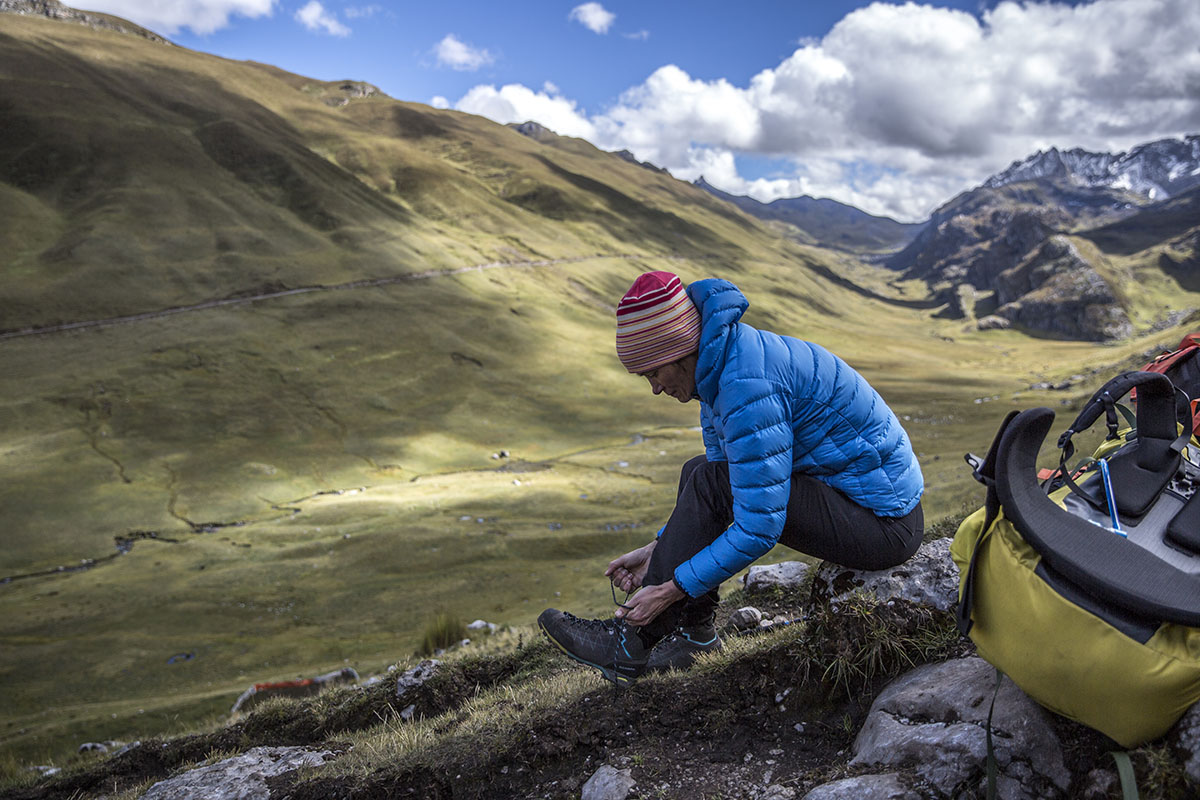
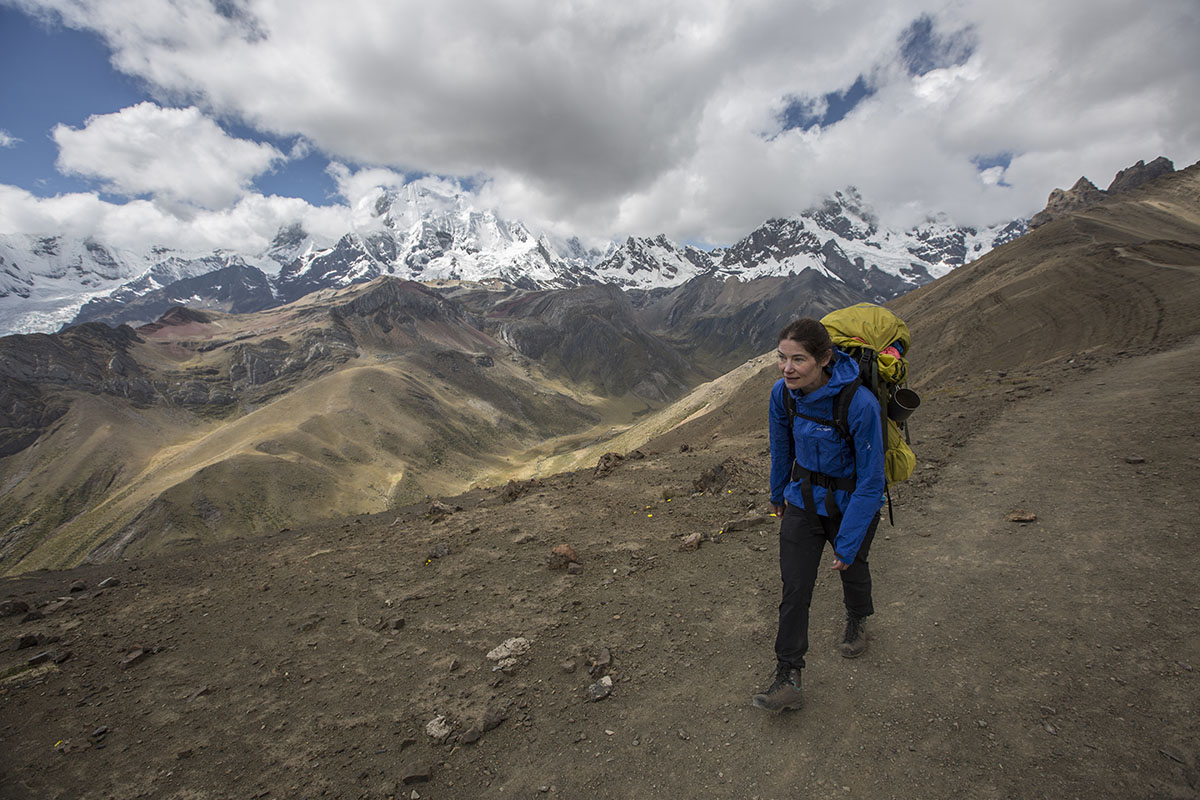
| Boot | Price | Category | Weight | Waterproof | Upper |
|---|---|---|---|---|---|
| Scarpa Zodiac Plus GTX | $349 | Light/midweight | 2 lb. 0 oz. | Yes (Gore-Tex) | Suede leather |
| Scarpa Zodiac Tech GTX | $379 | Midweight | 2 lb. 5.4 oz. | Yes (Gore-Tex) | Suede leather |
| Salewa Mountain Trainer 2 Mid | $290 | Midweight | 2 lb. 8.2 oz. | Yes (Gore-Tex) | Suede leather |
| Arc'teryx Acrux TR GTX | $250 | Midweight | 2 lb. 1.2 oz. | Yes (Gore-Tex) | Synthetic |
| Salomon Quest 4D 3 GTX | $230 | Midweight | 2 lb. 8.6 oz. | Yes (Gore-Tex) | Nubuck leather / textile |
| Lowa Renegade GTX Mid | $255 | Midweight | 2 lb. 2 oz. | Yes (Gore-Tex) | Nubuck leather |
Landing on the hardcore end of Scarpa’s already-serious backpacking boot lineup, the Zodiac Plus stands out from the soft and flexy designs that you’ll find on most maintained trails. This is a tough boot through and through, and was the ideal choice for our trek through Peru's Cordillera Huayhuash. As mentioned above, Scarpa does make another variation, the Zodiac Tech, which steps up from the Plus’ off-trail hiking to light mountaineering. The Tech has a shank underfoot for a stiffer feel while climbing, and its rubber rand provides protection all the way around the foot (the Plus only protects the toes and heel). Which one to choose will be based on where you’re headed: if you need a boot that can handle moderate glacier travel, the slightly heavier and more expensive Zodiac Tech (2 pounds 5.4 ounces per pair and $379) is the better pick. But backpackers and hikers who need a supportive option likely will prefer the more well-rounded Plus.
A proven alternative to the Zodiac Plus is Salewa’s Mountain Trainer 2 Mid GTX. This is among the Italian company’s most popular offerings due to its burly materials, excellent protection, and sturdy feel. Stacked up to the Zodiac Plus, however, the Salewa does come across as a little dated. Despite having a similar suede upper and beefy traction, the Scarpa manages to undercut the Mountain Trainer in weight by around 8 ounces for the women’s pair, making it the better choice for long-distance trekking. The Zodiac also is a little more forgiving and flexible for added trail comfort (on the other hand, the stiffer Salewa will do a little better on very long climbs). Overall, unless you need the Salewa’s extra protection or prefer its narrower fit, we give the edge to the Scarpa.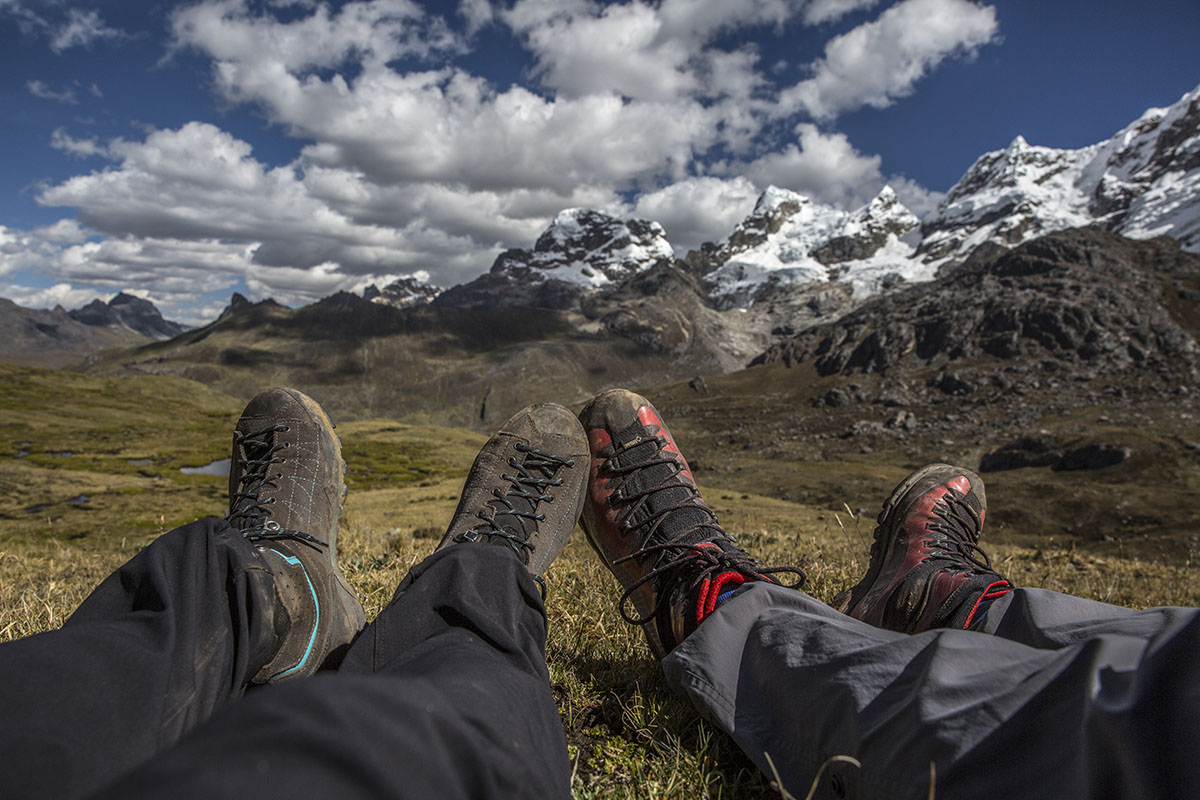
Next up is Arc’teryx’s Acrux TR GTX, which is their technical hiking boot offering. Compared to the Zodiac Plus, the Acrux TR costs around $100 less but retains a lightweight build (2 lbs. 1.2 oz. for a women’s pair), proven Gore-Tex waterproofing, and a quality, hardwearing construction that offers excellent support and protection for shuttling heavy loads over challenging terrain. However, we did find the insole to be a little too thin and flat for long days of hiking (a relatively easy fix), and overall cushioning falls short for high-mileage trips (this was a bigger issue). In the end, the Acrux is an enticing alternative for less, but we think the Scarpa is better equipped to handle rough and rocky treks.
Another option to consider is Salomon’s Quest 4D 3 GTX. Compared to the Zodiac, the Quest is a lot cheaper at $230 but considerably heavier at 2 pounds 8.6 ounces per pair. That said, the Salomon is a bit more of an all-rounder with its less rigid design, athletic feel, and impressive overall build (see our in-depth Quest 4D 3 GTX review here). In the end, the Quest has broader appeal for most hikers traveling over mixed terrain with a heavy pack, whereas the Scarpa is built for off-trail hikes and even crossing over into light mountaineering.
Last but not least is Lowa’s popular Renegade GTX Mid. Like the Quest 4D above, the Renegade has more widespread appeal for standard hiking and backpacking than the Zodiac Plus GTX but is a slight step down on the performance spectrum. However, the Lowa is competitively light at 2 pounds 2 ounces and offers better isolation from the ground than the aforementioned Salomon. Our only notable complaint with the Lowa is the lack of long-term durability, including a relatively thin construction and issues with separation between the toe rubber and leather upper during testing. That said, unless you plan to add light mountaineering to the mix, the Renegade is our preferred design in the midweight category.